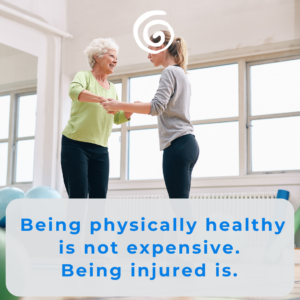If you’re one of the millions of people suffering from back pain, take heart – physical therapy can help in multiple proven ways. At our clinic, experienced physical therapists create customized treatment plans that reduce pain and restore normal function over time.
The four cornerstones of our back pain recovery programs are:
• Targeted strengthening exercises
• Flexibility training
• Postural correction
• Hands-on manual therapy
Strengthen With Exercises
A common source of back pain is poor strength and endurance in the intricate web of muscles supporting the spine. Their fatigue leads to poor posture, strained joints, compressed nerves and more.
Your physical therapist will prescribe targeted exercises strengthening these essential yet overlooked areas. Things like bridges, bird dogs, planks and rows shore up your core and back. As these foundational muscles grow stronger, they better uphold proper spinal alignment and absorb impacts.
Flexibility Exercises
Another important aspect of physical therapy for back pain is flexibility. Tight muscles can contribute to back pain, so stretching those muscles regularly can help alleviate your pain. Your physical therapist can show you some stretches that are specific to your condition and help you increase your overall flexibility.
Restricted flexibility from tight muscles also disrupts posture and strains the back. Your PT will identify inflexible areas using assessments then show you stretches bringing length back.
For example, opening up hamstrings, hip flexors and quadriceps through consistent stretching alleviates pull on the pelvis that twists the spine. Restoring flexibility minimizes back hyper mobility and irritation.
Posture Correction
Poor posture is a common cause of back pain, and it’s becoming even more prevalent with the work from home trend. Sitting at a desk all day can wreak havoc on your back and neck if you’re not sitting with proper posture.
Slouching over phones and laptops or sitting all day. These misalignments overload the spine’s shock absorption capabilities. Your PT helps identify personal postural issues then trains optimal positioning.
Simple tweaks like retracting your shoulders, lifting your chest and tucking your pelvis prevent the spine-compressing sway. Re train your brain.
Your physical therapist can help you identify any postural issues and show you exercises and stretches to correct them. They may also recommend ergonomic adjustments to your workspace to reduce the strain on your back.
Manual Therapy
Finally, manual therapy can be an incredibly effective way to treat back pain. Manual therapy techniques involve hands-on manipulation of your muscles, joints, and soft tissues to help relieve pain and improve mobility.
Hands-on techniques like massage, trigger point release and joint mobilization directly attack back pain sources. Your PT manually targets irritated nerves, adhesive muscle knots and stiff joints contributing to discomfort.
This myofascial and muscular manipulation increases blood flow, reduces buildups and loosens tissues. Combining this manual therapy with the training above provides well-rounded pain relief.
Get Back to Basics with MindBody PT
At MindBody Physical Therapy, we believe in taking a holistic approach to treating back pain. That’s why we offer a variety of different treatments and therapies to help our patients find relief. Whether you’re dealing with chronic back pain or just a nagging ache, we can create a personalized treatment plan to help you get back to your normal daily activities.
In addition to the four techniques listed above, we also offer other modalities such as ultrasound, heat and cold therapy. We believe that every patient is unique, so we work closely with each individual to create a customized treatment plan that meets their specific needs. And, we have our therapists work one-on-one – for the entire time you’re with us.
If you’re struggling with back pain we can help find relief and get back to the activities you love. Contact us today to schedule an evaluation with one of our experienced physical therapists. We’re here to help you feel your best!
I




